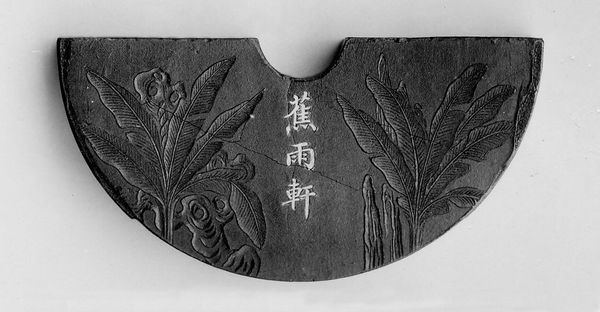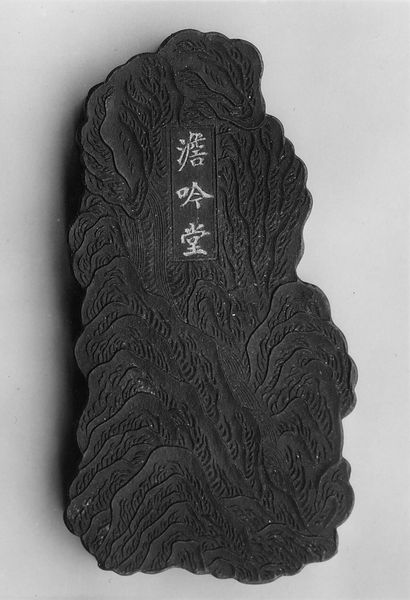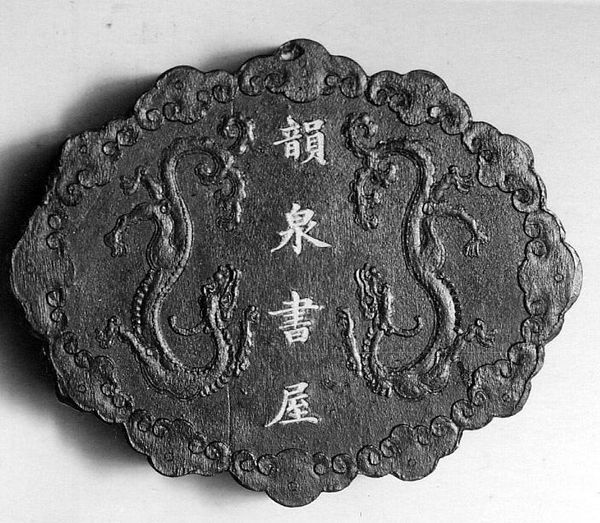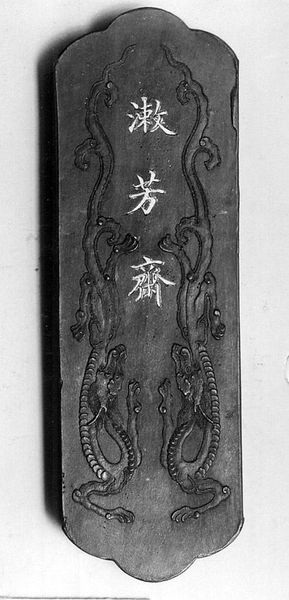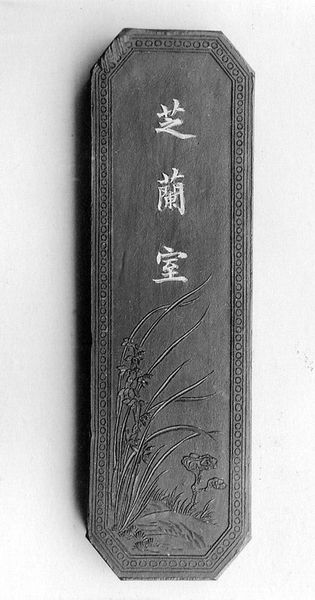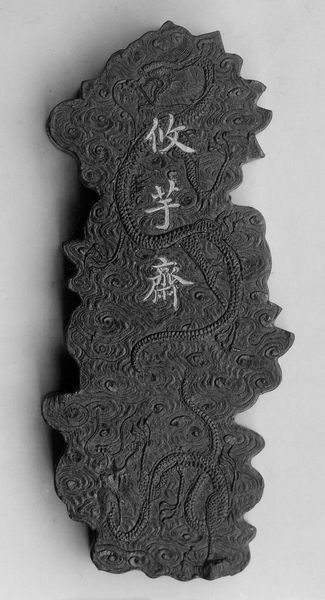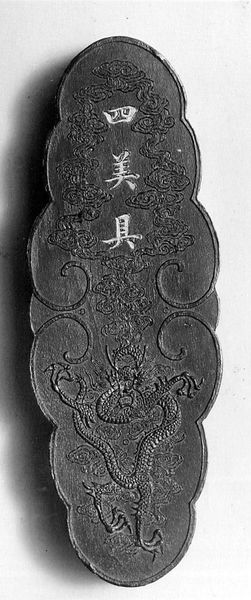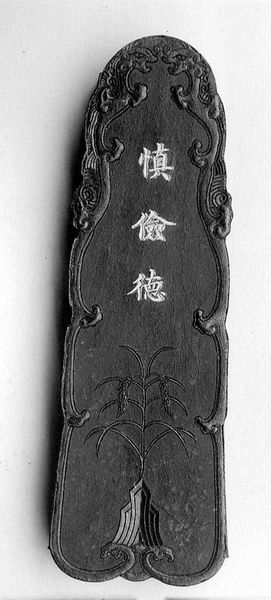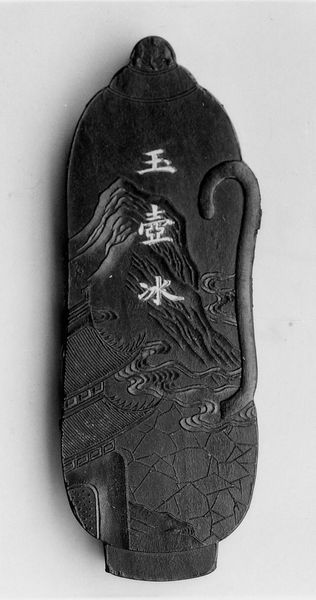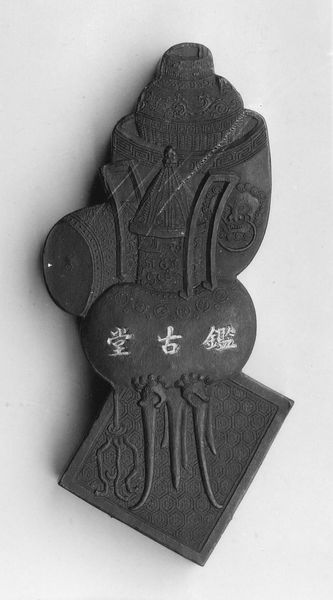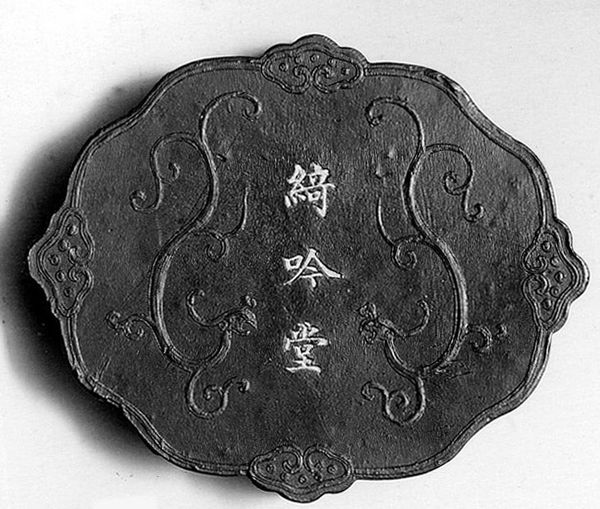
drawing, ink
#
drawing
#
sculpture
#
asian-art
#
landscape
#
ink
#
calligraphy
Dimensions: W. 2 5/8 in. (6.7 cm); L. 1 3/4 in. (4.4 cm)
Copyright: Public Domain
Curator: Let's discuss this compelling artwork: "Pool Lighted Studio," dating from 1871 to 1933 and currently held at the Metropolitan Museum of Art. It's an ink drawing and calligraphy by Jian Guzhai, an intriguing example of Asian art. Editor: It looks to be carved into... slate? Or perhaps a dense clay? It’s oddly shaped like an unrolling scroll, which strikes me as pretty clever—the material imitates the form. Curator: Yes, the illusion of a scroll is part of its charm. Jian Guzhai’s work appears as part of an elite culture invested in literary aesthetics and its accoutrements, the kind of piece someone would own to broadcast good taste, or to even participate in a literati gathering, perhaps displaying the latest artwork they have been collecting or curating themselves. Editor: Precisely. The physical presence—the feel, the heft—must have been crucial to its function. I can imagine artisans painstakingly creating these inkstones and inkcakes. There must be immense control over texture, surface, and composition to craft the piece from something like compacted earth. It really pushes our boundaries for "high art," doesn't it? Curator: Absolutely. The deliberate conflation of landscape imagery, calligraphy, and crafted object, shows something quite dynamic, beyond conventional pictorial representation. Calligraphy had, for a while, become a popular form in court because Emperors would show off their skill at it for symbolic power, and artists were also able to display themselves in new social echelons due to this practice. Editor: The contrast of textures must feel very powerful too. Even the subtle gradients within the blacks hint at the maker's skill and labor, it transforms the ordinary into a precious item—bound, perhaps, to elevate the writer's own persona within those circles of social and political power that you are talking about. Curator: It reveals an interesting cultural exchange as well, a dialogue between power, visual culture, and literary pursuit. And even if initially a preserve for higher societal groups, this cultural fascination eventually trickled down, broadening participation. Editor: And that transformation is intrinsically tied to how it's made, from what materials. We can easily extrapolate its time just from analyzing these aspects. Well, seeing this makes you ponder, doesn’t it? Curator: It indeed gives new perspective. It reminds us to see art as entangled with its context and history, with people’s place within systems of culture.
Comments
No comments
Be the first to comment and join the conversation on the ultimate creative platform.
